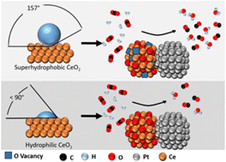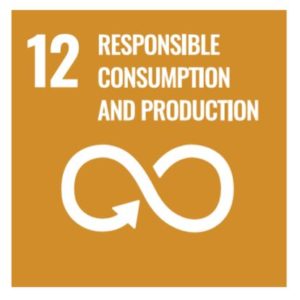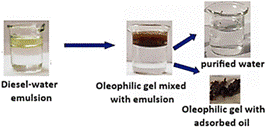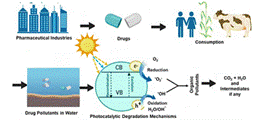
RSC Applied Polymers and RSC Applied Interfaces are pleased to announce the launch of a new addition to the series of themed collections in support of the Global Sustainable Development Goals initiated by the United Nations.
These collections highlight the current research taking place by scientists across the globe which demonstrates the ways in which chemical science is helping to make the world a better place.
RSC Applied Polymers and RSC Applied Interfaces are delighted to share the new collection centred around:

|
Sustainable Development Goal 6: Clean Water and Sanitation
This SDG collection focuses on Sustainable Development Goal 6: Clean Water and Sanitation. Articles in this collection showcase the efforts of our chemical scientists in meeting this global need, from providing innovative measures to detect and extract harmful chemicals from the worlds water sources, to developing sustainable methods in sanitation and waste management. |
Don’t forget that RSC Applied Polymers and RSC Applied Interfaces are both Gold open access journals, that means all our articles are free to read, including our new Sustainable Development Goals collections! The highly applied and interdisciplinary work included in these collections serve as a perfect example of the kind of papers we would like to see more of in RSC Applied Interfaces and RSC Applied Polymers.
Currently working towards one of the UN global sustainability goals? Submit your manuscript to RSC Applied Polymers or RSC Applied Interfaces to have it included in this ongoing collection!
Please check the journal websites for scope and submission details.
We hope you enjoy reading from our new sustainable development goals collections.
Keep an eye out for our other Sustainable Development Goals collections.
Sustainable Development Goal 3: Good Health and Wellbeing
Sustainable Development Goal 7: Affordable and Clean Energy
Sustainable Development Goal 12: Responsible Production and Consumption
These collections are not curated in affiliation with the United Nations but are representative of Royal Society of Chemistry’s support for the Global Sustainability Goals initiated by the United Nations.
To find out more about the United Nations Global Sustainability Goals visit https://sdgs.un.org





 Niobium oxide coatings on nanostructured platinum electrocatalysts: benefits and limitations
Niobium oxide coatings on nanostructured platinum electrocatalysts: benefits and limitations


 Polypropylene fabric coated with branched polyethyleneimine derivatives for high antiviral activity
Polypropylene fabric coated with branched polyethyleneimine derivatives for high antiviral activity

 Engineering Pt–CeO2 interfaces for reverse water-gas shift (RWGS) reaction
Engineering Pt–CeO2 interfaces for reverse water-gas shift (RWGS) reaction


 Zinc adeninate metal–organic framework-coated optical fibers for enhanced luminescence-based detection of rare earth elements
Zinc adeninate metal–organic framework-coated optical fibers for enhanced luminescence-based detection of rare earth elements












 Manganese dioxide (MnO2) and biomass-derived carbon-based electroactive composite materials for supercapacitor applications
Manganese dioxide (MnO2) and biomass-derived carbon-based electroactive composite materials for supercapacitor applications Miss Pranoti Patil obtained her Master of Science degree from Shivaji University Kolhapur, India, with excellent academic records. Her research works are focused on the synthesis and electrochemical testing of biomass-derived carbon, manganese dioxide, conducting polymers, and carbonaceous materials such as carbon nanotubes, graphene oxide, and reduced graphene oxide-based binary as well as ternary nanocomposites as electrode materials to be used in energy storage devices like supercapacitors and battery type supercapacitors.
Miss Pranoti Patil obtained her Master of Science degree from Shivaji University Kolhapur, India, with excellent academic records. Her research works are focused on the synthesis and electrochemical testing of biomass-derived carbon, manganese dioxide, conducting polymers, and carbonaceous materials such as carbon nanotubes, graphene oxide, and reduced graphene oxide-based binary as well as ternary nanocomposites as electrode materials to be used in energy storage devices like supercapacitors and battery type supercapacitors.